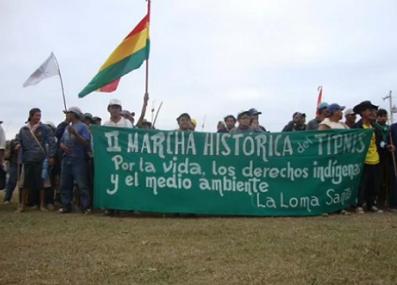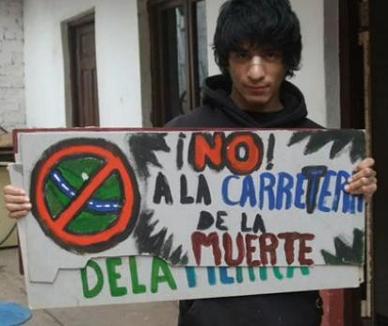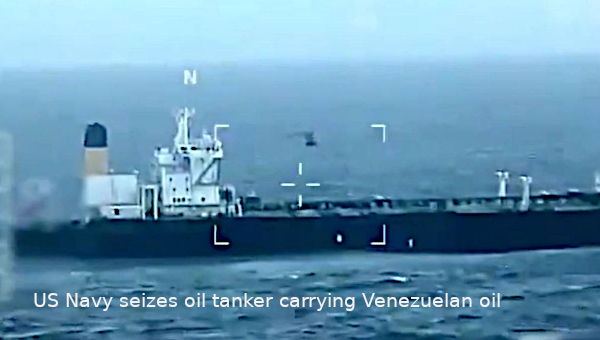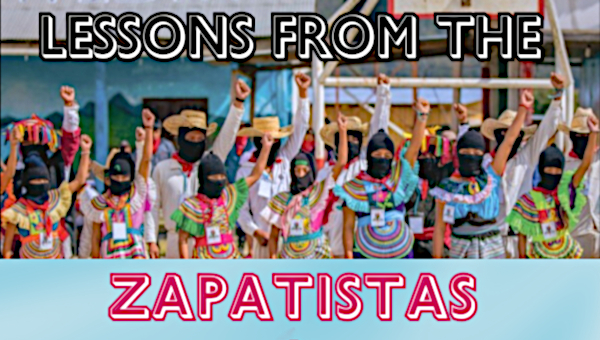Internal Fractions and the Right in Bolivia
A month has gone by since the people of the Territorio Indígena Parque Nacional Isiboro Sécure (TIPNIS as they are referred to in Bolivia) departed from Trinidad in the province of Beni, Bolivia in reaction to the Movimiento al Socialismo’s (MAS) announcement to construct the highway “Villa Tunari-San Ignacio de Moxos” through their territory. The marchers have already surpassed the time it took to complete this march of 33 days in the 90s, but are still a long way from La Paz, having been successfully stalled along the way with consultas with government ministers and authorities. Presently the marchers are in Limoncito, and have declared a “state of emergency” – as they re-commence the march in the face of a blockade of colonizadores and police officers that are waiting for them 10 kilometres away. A blockade which has people wondering why the police have been sent if the right to protest is guaranteed in the Consituyente Política del Estado (CPE), and has people reflecting on President Evo Morales‘s rise to power and his own use of direct-action tactics which were oppressed and attacked by neoliberal governments.
MAS Tactics
In the first week of September, a group of colonizadores announced that they would set-up a counter-blockade to oppose the TIPNIS preventing their passageway to Bolivia’s capital La Paz. The colonizadores, arguing that the TIPNIS need to dialogue, have set up camp in Yucomo, 30 kms ahead of San Borja. They are primarily holding the line in order to support the ‘proceso de cambio’ and Morales government. This blockade is preventing the movement of people and vehicles. The majority of vehicles are moving from supporting communities to the march with vital supplies like water, food and medications. As a result of this blockade, the MAS government announced on September 9th that they would be sending 450 police officers into Yucomo in order to observe and prevent violent confrontations between the blockaders and marchistas (lending a similarity to past the violent eruptions first in Santa Cruz, and later in the Pando). And despite President Evo Morales and Vice-President Álvaro García Linera’s emphasis that the police are only there to prevent violence, one has to wonder what will unfold in the event of conflict.
 On September 19th, the police intervened against a support-blockade that some from the Guarani community were executing in the highway Santa Cruz-Yacuiba in solidarity with the TIPNIS. There were several people that obtained injuries (4 adults and 2 children), and two Guarani leaders have been detained by police. It is interesting that while the colonizadores blockade continues to prevent the passage of food and water to the marchers without police intervention, this blockade is repeatedly receiving police repression. On September 20th, the colonizadores announced that they were starting to march toward the indigenas with the objective of fronting themselves against the indigenous march. The Vice-President continues to argue that the police have received orders that they are not to engage in violence, or use gas – both of which we saw being used against the Guarani march last night.
On September 19th, the police intervened against a support-blockade that some from the Guarani community were executing in the highway Santa Cruz-Yacuiba in solidarity with the TIPNIS. There were several people that obtained injuries (4 adults and 2 children), and two Guarani leaders have been detained by police. It is interesting that while the colonizadores blockade continues to prevent the passage of food and water to the marchers without police intervention, this blockade is repeatedly receiving police repression. On September 20th, the colonizadores announced that they were starting to march toward the indigenas with the objective of fronting themselves against the indigenous march. The Vice-President continues to argue that the police have received orders that they are not to engage in violence, or use gas – both of which we saw being used against the Guarani march last night.
On Friday September 16th, Morales announced a meeting with a group of marchistas who had been marching but opted to return to their communities. According to a marcher with whom I recently had a conversation with, this move is one that will only serve to further divide these communities, debilitate the march, and depoliticize the action. Perhaps more troubling, is that following the meeting, Evo announced that he would be leaving the country, travelling first to Venezuela, then Cuba and the United States for the UN meetings in New York. It seems extremely odd but also worrisome that the president of the MAS would be leaving the country during these times. Given that this blockade has been set up, the police have been dispatched, and every day that the march is stalled, is another day tacked on to the end of an already long journey. The TIPNIS have been seeking an audience with the President since day one. One has to wonder why Morales is leaving the country, why he didn’t send a delegate to this conference, when times are clearly uncertain in Bolivia. It seems to many that the popularly elected President of Bolivia should be negotiating and struggling with his people instead of against them.
The Consulta
In the CPE, the right to a free and informed primary consulta for indigenous communities is guaranteed. The adaptation of this regulation in the CPE was both revolutionary and historically relevant given that Bolivia emerged as the first country to adopt the UN consulta legislation in the Rights of Indigenous People. What the people, and the government failed to consider, however, is what would happen in its implementation – how would this actually play out in favour of an equal relationship between indigenous people and transnational capital. That is to say, what happens in practice is the only solution when an indigenous community says “no” and rejects the project and the interests of transnational capital? The TIPNIS highway is not the first example that indigenous communities have where their voices have been silenced by those of transnational capital. For Villegas’ investigations with indigenous communities facing transnational hydrocarbon and mining projects, in practice, “the preliminary consultative process is more an act of publicity.”[1] And from the ways in which this project has been developing it is safe to say that this case, the Highway “Villa Tunari-San Ignacio de Moxos” has not presented us with anything new, if not another example of the contradictions that emerge in capitalist development projects.
What was first a consultation to find solutions, has resulted in a consultation to convince the affected parties that “tomo II” is the only solution.[2] Therefore instead of creating an arena of information and consultation that is free and equal, the government has embarked on a journey of assimilation to construct legitimacy for this project, which will clearly favour the IIRSA[3] and Brazilian government. And so with every meeting that the government ministers have with the TIPNIS, from the outside it appears as though it is the TIPNIS who are not being cooperative and not wanting dialogue. This is a position that is not only completely void of its present context of what happens within these meetings which according to Adolfo Chavez, the President of the CIDOB, is not a process of dialogue. It is also void of its broader historical context, which is the failure of a consultation prior to the initiation of the project. And so between the name-calling, the accusations, and the conspiracy theories the objectives for this project are quite clear – the investments are being set-up and promises are being made.
Enter the Miners
With the mining commission in Potosi, and the new elections of the executive in Huanuni,[4] the Federacion Sindical de Trabajadores Mineros Bolivianos (FSTMB) announced officially that they, too, would be supporting their indigenous brothers and sisters, “because as working miners it is important to maintain an alliance not only between those exploited and marginalized from power, but because like us, they are demanding that their land and their form of survival not be subjugated.”[5] Bolivian miners have a rich history of struggle against imperialist and capitalist interests and those who participated in the struggles of 2003 will tell you how important the arrival of the miners to La Paz was for the fight. Today, given that Bolivia’s primary economy is still based in the extractive industries of mining and hydrocarbons, the importance of national support of the miners for the TIPNIS cannot be overstated.
On September 20th 2011, the general secretary of Huanuni, in a press conference in Cochabamba, announced that all of the secretaries of the FSTMB would be meeting the following day in La Paz to define when and where they would enter the march. The FSTMB announced that they are not against the highway per se, but rather the motivations behind the highway, and the lack of consultation with the indigenous peoples who live in the region. According to the secretary general of Huauni, Juan Carlos Guarachi: “The government needs to meet with the marchistas, and also with the Bolivian people because this theme is about defending our natural resources…” The secretary followed this statement with the importance of demanding nationalization, “complete nationalization of all deposits, and at the same time, of all private corporations – not only in mining, if not in all aspects.”[6] Along with the newest political manifesto that was produced at this latest congress, it is clear that the anti-capitalist proposals that the miners withhold – and with mining housing a large number of workers in Bolivia – nearly 5000 in Huanuni alone – it is clear that support from the traditionally more radical sectors of the popular classes might be what the TIPNIS needs to finish the march, and redirect the discourse to something broader than rights.
Internal Fractions
Although support continues to hold, the divisions within the Left are even more marked. With the recent counter blockades in Yucumo, Bolivia is finding itself at the threshold of what could potentially end up as a tense confrontation, which has many Bolivians fearing the worst. Despite the fact that the MAS government has claimed that the police officers will not be taking an active role, but rather observing to prevent confrontation, testimonials from marchers reveal that the nearly 500 officers have set up camp 10 kms from Yucumo and are running drills. The government has announced that they don’t have firearms, but marchers have claimed that the police have their riot gear. The police were sent in order to observe and “ensure that no confrontations turn violent.”[7] But several questions are still raised by the road blockade. Isn’t the right to protest guaranteed in the CPE and by the constitution of the Bolivian state? Didn’t the President himself exercise these very tactics in his road to power?
These issues are raising tensions within the popular classes, and presenting divisions within the left. The organizations within the Pacto de Unidad are split on this issue with the CONAMAQ and CIDOB marching in favour, the CSUTCB and Interculturales opposing the march, and the Bartolina Sisas maintaining their position of re-initiating dialogue. Beyond these flagship organizations, according to Moises Dores, a Vice-President of the MST-BO marching in solidarity with the TIPNIS, “the situation is obligating to ask for more reinforcements if the blockades continue, the sad part is that with these blockades it is positioning a confrontation between indigenous and campesinos.”[8] This is undoubtedly true, as the march has served to unite some sectors, while dividing others. In particular this march has revealed some deep divisions between indigenous and campesino communities. What the left in Bolivia needs right now, however, is unity when increasingly confronted with national and international capital interests.
The left division on this issue has exploded into an ideological battle with the most militant of Massistas taking the lines to defend the MAS and this politic of development against the “salvajes.”[9] The right is taking a passive role in this battle, silently organizing amidst the turmoil. As Sergio Almaraz reminds us, “What is important in politics is not always what is inside but what is waiting outside.”[10] What is waiting outside is a right-wing opposition that is leaping at the opportunity that they have been presented with. Ex-President Carlos Mesa appeared on a morning show in September denouncing the government’s refusal to dialogue with the TIPNIS. This is deeply ironic given his political history, and the alliances he has cemented in the Media Luna region. Just this week a large group of right-wing allies wrote an open letter to Evo Morales published in the major newspapers denouncing his actions and demanding a re-instatement of dialogue. And the Movimiento Sin Miedo is actively supporting the march, taking every chance they can to advance a public relations campaign supporting the TIPNIS, while simultaneously slipping in the “voto nulo”[11] and denouncing the MAS’s politics.
Challenges of Underdevelopment
What has evolved over the past month is that a rights discourse has taken precedence over the broader anti-imperialist discourse that emerged at the beginnings of the protests. With the increased involvement of civil society, including important actors mobilizing in favour of the right, the emphasis has been on the importance of respecting the CPE and the consulta for indigenous people. The re-direction of the central issue of the development strategy, capitalism and control of the indigenous peoples is problematic. The march has had a push and push-back dialectic. The right has organized in favour of the march and simultaneously against the Morales government; while the left has sought to emphasize the links between rights and the intrusions of transnational capital.
 The government has made accusations that the march is being supported by the right are not untrue, and it is clear that the right is gaining headway by supporting this march. That being said, those marching, those enduring the trials of what is now 35 days of water and food scarcity are not those who have been co-opted or managed by NGOs or the right, they are marching because, as one woman put it “things I have never had, money or fear. If I need to defend my land with my life, I will do it with pleasure.” With the counter march emerging by the colonizadores, who are saying that they have left with the intention of fighting, it is clear that the peaceful march that once was is going to be pushed to a dangerous limit.
The government has made accusations that the march is being supported by the right are not untrue, and it is clear that the right is gaining headway by supporting this march. That being said, those marching, those enduring the trials of what is now 35 days of water and food scarcity are not those who have been co-opted or managed by NGOs or the right, they are marching because, as one woman put it “things I have never had, money or fear. If I need to defend my land with my life, I will do it with pleasure.” With the counter march emerging by the colonizadores, who are saying that they have left with the intention of fighting, it is clear that the peaceful march that once was is going to be pushed to a dangerous limit.
What can the MAS learn from this conflict? The larger battle here is the MAS’s workings toward the proceso de cambio [change process]. The MAS has been eager to point out that the right is supporting the TIPNIS, but reluctant to realize that the right wins with this project: agro-industrial, forestry, and oil interests in the territory will be strengthened and they will be easily tapped by transnational capital interests. The right is supporting the march, and antagonizing conflicts within the left. The right sits back, organizes, and waits, all the while supporting the development projects.
Where exactly is the MAS’ proceso de cambio trying to go? If the objective is to foster development with this highway, then the government has done nothing to ensure that upon its construction any projects that develop will be nationally and democratically controlled with the exercise of significant indigenous oversight. In fact, recent modifications to the Forestry and Agricultural Production laws indicate the opposite: headway has been made to encourage capitalist development, with the significant sum of $415-million (U.S.) offered by the Brazilian Government. If there is anything that this highway project has revealed it is the importance of picking your battles, consolidating the social forces for an alternate model of development, and avoid dividing the support base among the complex relations of Bolivian social movements after centuries of oppression and underdevelopment.
The social movements in Bolivia have deep fragmentations, and this march has exposed some of them. There remain deep contradictions within the Bolivian state and the MAS programme between traditional developmentalism and visions of protecting ‘Mother Earth.’ This is a chasm that can split in different political directions in the struggles against the historical colonialism and imperialism today, without a deep process of dialogue and building to overcome the divisions of the social movements and amongst the producing classes. It is hard to see how anything but a radical anti-capitalist programme could overcome these obstacles in the context of neoliberalism. In the mean time, the Bolivian right is patiently waiting the results of any rupture. •
Endnotes:
1.
P. Villegas, ¿Puede haber Consulta Previa entre la escopetay las palomas? Petropress, 22: 9, 2011.
2.
Tomo 2 is the original proposition which will pass directly through TIPNIS territory.
3.
The IIRSA is an international institution which is funding infrastructural projects all across Latin America, the majority of which are highways.
4.
Huanuni has the largest number of miners nationally
5.
Press Release, Miguel Pérez representative of Huanuni state mine.
6.
Recorded at press conference, September 20th, 2011. Plaza Principal, CBBA Bolivia.
7.
Vice-President Linera.
8.
Moises Dores, Vice-President ST-BOL, statement of the march II, September 2, 2011.
9.
As the president of CSUTCB Roberto Cruite referred to his lowland brothers on Wednesday September 7th in a public CSUTCB press statement opposing the march
10.
S. Almaraz, Obras Completas. Plural: La Paz, 2011.
11.
The MSM, or Movimiento Sin Miedo, is a middle-class center-right political party that has been managing a “voto nulo” campaign in preparation for the Judicial Elections that are due to take place in October 2011.





